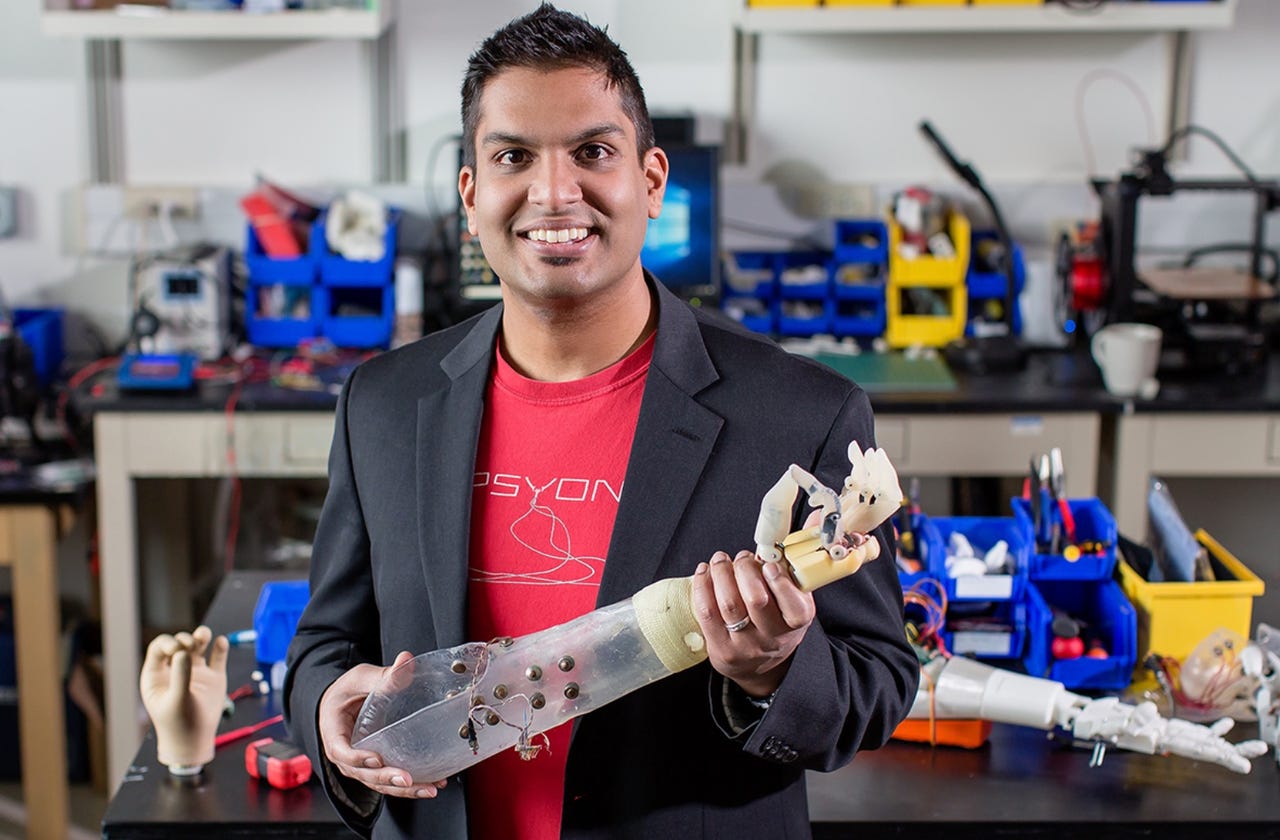This prosthetic hand brings back sensation from lost limbs


A team of researchers has developed an algorithm which can be utilized to implement uninterrupted sensation into prosthetics.
Featured
When an individual loses a limb through accidents or medical problems, it is not just the loss of functionality which can be psychologically damaging and cause adaptation issues -- it is the loss of the sense of touch.
Sensations help us use our hands, feet, and limbs effectively, such as when grasping fragile objects, ascertaining how much pressure we need to apply to grip, and they also help us respond to our environments, including helping us judge how to walk on surfaces with different conditions and textures and alerting us to potentially hazardous objects.
Today's prosthetics rarely include any feedback for users to regain their sense of touch. However, scientists from the University of Illinois have been working to change that.
On Thursday, the team revealed the creation of a control algorithm which regulates electrical currents and feedbacks in prosthetics.
These currents stimulate nerves with mild electrical feedback, and together with a control algorithm, can grant prosthetics users steady feelings of sensation when in use.
The research has been published in the academic journal Science Robotics.
"We're giving sensation back to someone who has lost their hand," said Aadeel Akhtar, an M.D./Ph.D student and lead author of the paper describing the research. "The idea is that we no longer want the prosthetic hand to feel like a tool, we want it to feel like an extension of the body."
"Commercial prosthetics don't have good sensory feedback," the scientist added. "This is a step toward getting reliable sensory feedback to users of prosthetics."
Some of the more advanced prosthetics on offer today do have embedded sensors which are able to stimulate nerves when the synthetic comes into contact with an object. However, the reliability of feedback based on pressure and touch is still problematic, and over time, sensors can wear away or sweat and bodily fluids can disrupt signals.
The erosion of electrodes over time can also result in electrical buildups, leading to painful shocks.
However, through the controlling algorithm embedded in a module fastened to the prosthetic, even if electrodes peel away and sweat builds up, the algorithm will make sure sensations are not disrupted -- and sudden pain is no longer an issue.
The system has been tested in two patient volunteers involved in everyday tasks. The researchers found that up to 75 percent of electrodes can peel off before the algorithm no longer adjusts current levels effectively.
"What we found is that when we didn't use our controller, the users couldn't feel the sensation anymore by the end of the activity," Akhtar says. "However, when we had the control algorithm on, after the activity they said they could still feel the sensation just fine."
At the moment, the algorithm can only be used by attaching the control module to the outside of a prosthetic. However, the team is working on slim-lining the module so it can fit inside the object.
See also: Sensors under the skin monitor your alcohol intake
Cost is also an issue to tackle. Prosthetic limbs -- even in the most basic forms -- are often very expensive, and so implementing this technology could be problematic in anything but the most expensive models available today.
The team is not sure of the full costs of the module, but according to Akhtar, the overall goal is to make sure the costs would be "completely covered by insurance at no out-of-pocket costs to users."
"We want our users to be able to reliably feel and hold things as delicate as a child's hand," Akhtar added. "This is a step toward making a prosthetic hand that becomes an extension of the body rather than just being another tool."
The research was funded by the National Institutes of Health and the National Science Foundation.